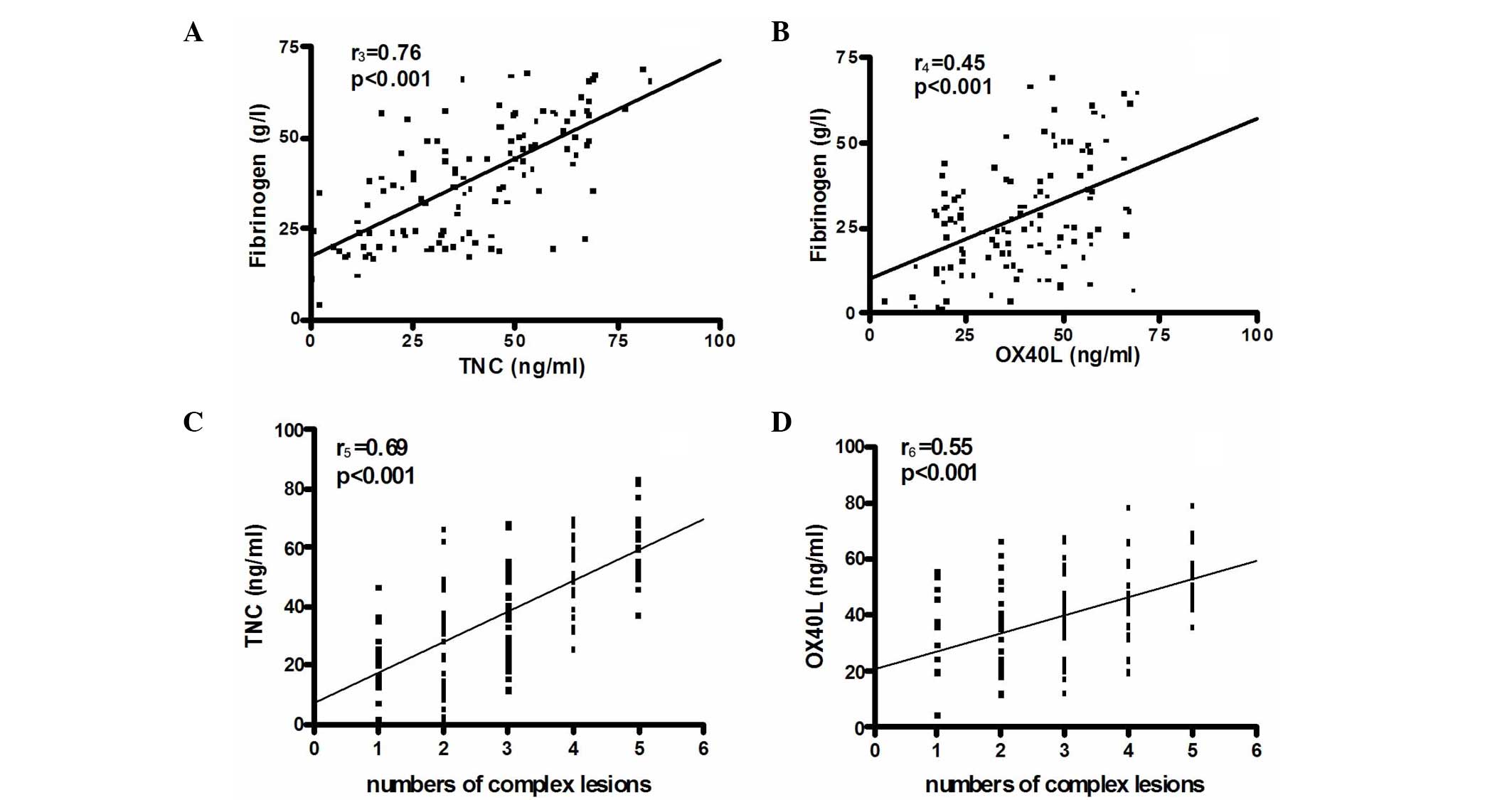|
1
|
Lin Y, Pan W, Ning S, Song X, Jin Z and Lv
S: Prevalence and management of hypertension in patients with acute
coronary syndrome vary with gender: Observations from the Chinese
registry of acute coronary events (CRACE). Mol Med Rep. 8:173–177.
2013.PubMed/NCBI
|
|
2
|
Goodacre S, Thokala P, Carroll C, et al:
Systematic review, meta-analysis and economic modelling of
diagnostic strategies for suspected acute coronary syndrome. Health
Technol Assess. 17:1–188. 2013. View
Article : Google Scholar : PubMed/NCBI
|
|
3
|
Hou HW, Li XG, Yan M, Hu ZQ and Song YE:
Increased leukocyte Rho-kinase activity in a population with acute
coronary syndrome. Mol Med Rep. 8:250–254. 2013.PubMed/NCBI
|
|
4
|
Dobaczewski M, Gonzalez-Quesada C and
Frangogiannis NG: The extracellular matrix as a modulator of the
inflammatory and reparative response following myocardial
infarction. J Mol Cell Cardiol. 48:504–511. 2010. View Article : Google Scholar : PubMed/NCBI
|
|
5
|
Ohno Y, Izumi M, Yoshioka K, Ohori M,
Yonou H and Tachibana M: Prognostic significance of tenascin-C
expression in clear cell renal cell carcinoma. Oncol Rep.
20:511–516. 2008.PubMed/NCBI
|
|
6
|
Golledge J, Clancy P, Maguire J, Lincz L
and Koblar S: The role of tenascin C in cardiovascular disease.
Cardiovasc Res. 92:19–28. 2011. View Article : Google Scholar : PubMed/NCBI
|
|
7
|
Trescher K, Thometich B, Demyanets S, et
al: Type A dissection and chronic dilatation: tenascin-C as a key
factor in destabilization of the aortic wall. Interact Cardiovasc
Thorac Surg. 17:365–370. 2013. View Article : Google Scholar : PubMed/NCBI
|
|
8
|
Ueki T, Murata S, Kitamura N, Mekata E and
Tani T: Pre-treatment with cyclophosphamide or OX40 (CD134)
costimulation targeting regulatory T cell function enhances the
anti-tumor immune effect of adoptively transferred CD8+T
cells from wild-type mice. Mol Med Rep. 2:615–620. 2009.PubMed/NCBI
|
|
9
|
Chen Y, Zhang L, Huang H, et al:
Association of OX40 and OX40L gene polymorphisms with acute
coronary syndrome in a Han Chinese population. DNA Cell Biol.
30:597–602. 2011. View Article : Google Scholar : PubMed/NCBI
|
|
10
|
Willett BJ, McMonagle EL, Logan N,
Schneider P and Hosie MJ: Enforced covalent trimerisation of
soluble feline CD134 (OX40)-ligand generates a functional
antagonist of feline immunodeficiency virus. Mol Immunol.
46:1020–1030. 2009. View Article : Google Scholar : PubMed/NCBI
|
|
11
|
National Committee for Clinical Laboratory
Standards (NCCLS). Procedure for the Determination of Fibrinogen in
Plasma; Approved Guideline. NCCLS document H30-A. 2nd edition.
Wayne, PA: pp. 991999
|
|
12
|
Gensini GG: A more meaningful scoring
system for determining the severity of coronary heart disease. Am J
Cardiol. 51:6061983. View Article : Google Scholar : PubMed/NCBI
|
|
13
|
Profumo E, Buttari B, Saso L, Capoano R,
Salvati B and Riganò R: T lymphocyte autoreactivity in inflammatory
mechanisms regulating atherosclerosis. ScientificWorldJournal.
2012:1575342012. View Article : Google Scholar : PubMed/NCBI
|
|
14
|
Nicholls SJ, Andrews J, Puri R, Uno K and
Kataoka Y: Imaging progression of coronary atherosclerosis. Circ J.
77:3–10. 2013. View Article : Google Scholar : PubMed/NCBI
|
|
15
|
Reriani MK, Flammer AJ, Jama A, Lerman LO
and Lerman A: Novel functional risk factors for the prediction of
cardiovascular events in vulnerable patients following acute
coronary syndrome. Circ J. 76:778–783. 2012. View Article : Google Scholar : PubMed/NCBI
|
|
16
|
Christenson E and Christenson RH: The role
of cardiac biomarkers in the diagnosis and management of patients
presenting with suspected acute coronary syndrome. Ann Lab Med.
33:309–318. 2013. View Article : Google Scholar : PubMed/NCBI
|
|
17
|
Niebroj-Dobosz I: Tenascin-C in human
cardiac pathology. Clin Chim Acta. 413:1516–1518. 2012. View Article : Google Scholar : PubMed/NCBI
|
|
18
|
Ohtsuka M, Yamamoto H, Oshiro R, et al:
Concurrent expression of C4.4A and Tenascin-C in tumor cells
relates to poor prognosis of esophageal squamous cell carcinoma.
Int J Oncol. 43:439–446. 2013.PubMed/NCBI
|
|
19
|
Nakano M, Fukumoto Y, Satoh K, et al: OX40
ligand plays an important role in the development of
atherosclerosis through vasa vasorum neovascularization. Cardiovasc
Res. 88:539–546. 2010. View Article : Google Scholar : PubMed/NCBI
|
|
20
|
Koch KC, Schaefer WM, Ersahin K, et al:
Haemodynamic significance of stent lesions compared to native
coronary lesions: a myocardial perfusion imaging study. Heart.
90:691–692. 2004. View Article : Google Scholar : PubMed/NCBI
|
|
21
|
Kaur D and Brightling C: OX40/OX40 ligand
interactions in T-cell regulation and asthma. Chest. 141:494–499.
2012. View Article : Google Scholar : PubMed/NCBI
|
|
22
|
Croft M, So T, Duan W and Soroosh P: The
significance of OX40 and OX40L to T-cell biology and immune
disease. Immunol Rev. 229:173–191. 2009. View Article : Google Scholar : PubMed/NCBI
|
















